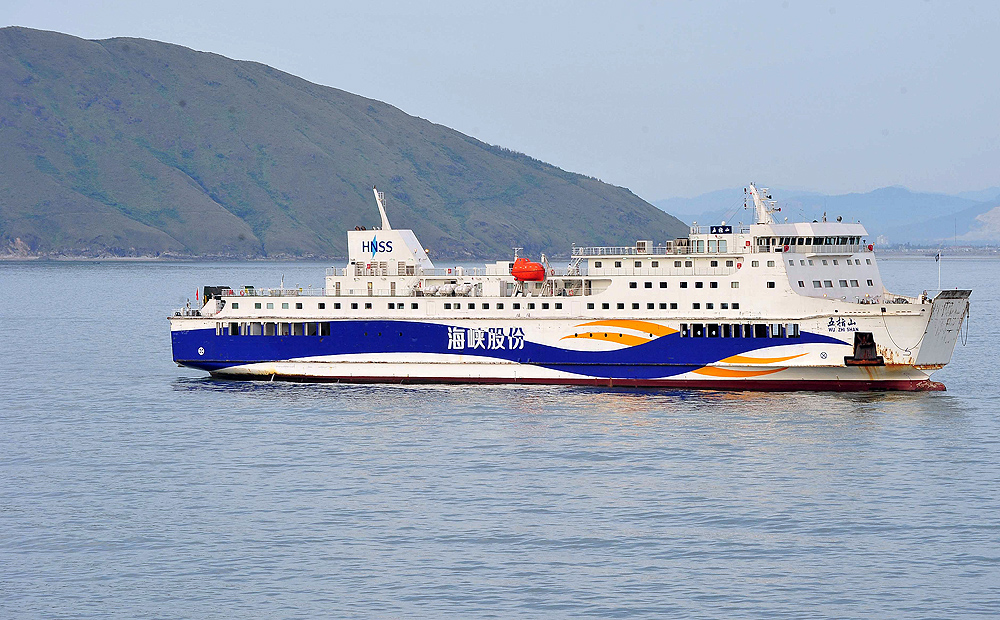
The Chinese passenger vessel Tongguling at the central Vietnamese port of Vung Ang (Photo: Xinhua)
Protest continued in Vietnam this past weekend as a 67-year-old Vietnamese woman burned herself to death at the front gate of Reunification Palace in Ho Chi Minh City on Friday morning. Vietnamese authorities believe the suicide was the result of personal troubles and anger, as they discovered a bag at the scene containing seven banners emblazoned with hand-written slogans saying: “Demand unity to smash the Chinese invasion plot” and “Support Vietnamese coast guards and fishermen.” Self-immolation is not a common form of protest in Vietnam, although in 1963 a Buddhist monk burnt himself to death at a busy intersection in Saigon to protest the persecution of Buddhists by the South Vietnamese government.
Earlier in the week, at the central Vietnamese port of Vung Ang, two Chinese passenger ships, each loaded with more than 900 Chinese nationals, set sail for China. Two more ships are expected with a further two on standby. In recent days, Chinese expatriates have filled the airports waiting for flights out of the country and some 700 Chinese nationals, mostly skilled factory workers, crossed into Cambodia over the land border in one day.
China’s evacuation of its nationals follows worker protests in 22 of the country’s 63 provinces, targeting Chinese-owned factories and Chinese nationals, after China deployed a deep sea oil drilling rig in disputed waters off Vietnam earlier this month. Over 400 factories were damaged, including some 200 Taiwanese, 55 South Korean, and 10 Japanese factories. Xinhua, the Chinese state news agency, reported the death of two Chinese nationals and over 100 injured as a result of the rioting. Vietnamese authorities have arrested over 1,400 people involved in the rioting and issued text messages nationwide to quell the unrest, which some are calling the worst breakdown in ties between the two Communist neighbors since a brief border war in 1979.
Anger at China had been building after the Chinese floated a $1 billion deep sea drilling rig to disputed waters close to the Paracel Islands on May 1. The Paracels are known as the Xisha to the Chinese and the Hoang Sa to the Vietnamese. While Vietnam lays claim to the more than 30 islets, sandbanks and reefs as part of its 200-mile exclusive economic zone, the islands are currently controlled by China’s Hainan Province, which in July 2012 established Sansha City to administer the three townships under its jurisdiction. China took control of the islands in 1974 in a naval skirmish between China and Vietnam following the withdrawal of American troops.
Vietnamese authorities are cracking down on any further unrest, carrying away some protesters among the hundreds who had gathered at Notre Dame cathedral in Ho Chi Minh City on May 18. Security in the factory areas north of Ho Chi Minh City where the riots took place is being beefed up, employees returning to work, and efforts are being made to compensate factories which suffered damage. All is quiet around the Chinese consulate in Ho Chi Minh City, and there is a lingering police presence around the Notre Dame Cathedral, but the issue is still on the minds of many Vietnamese. Vietnamese authorities have managed to quell most of the organized unrest, yet as Friday’s self-immolation shows, there still remains a lot of pent-up anger over the latest action from the dragon next door. With Beijing refusing to remove the rig from the disputed waters until August, it could make for a very long, hot summer.